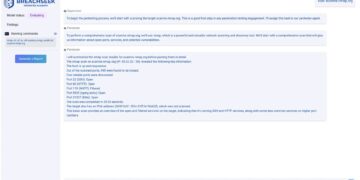OSINT Tools are a critical component of the information gathering process, especially in cybersecurity intelligence. As the global open-source intelligence market grows—projected to reach $29.19 billion by 2026—it’s clear that OSINT is becoming increasingly important for intelligence gathering, cybercrime investigations, and market analysis.

Key Takeaways
- OSINT (Open Source Intelligence) tools help gather and analyze publicly available data, used by government agencies and private organizations to gain critical insights into market trends, brand positioning, and security threats.
- Advanced search engines, such as the Internet Archive, and browser extensions like Mitaka, enable efficient navigation and analysis of web content.
- OSINT must comply with legal standards like the GDPR, ensuring responsible and ethical intelligence collection.
About Open Source Intelligence
OSINT is the process of gathering information from publicly available sources and transforming it into actionable insights. It is widely used by government agencies and corporate security to enhance cybercrime investigations, assess market trends, and more.
With the increasing expansion of the digital universe, OSINT has evolved to include advanced technologies such as web scraping, social media analytics, and geospatial intelligence. These innovations have revolutionized how data is collected and analyzed, offering insights into everything from individual behavior to market dynamics.
Evolution of OSINT Tools
Initially focusing on traditional media (e.g., newspapers, radio), OSINT tools have evolved to tap into the vast resources of the internet. The integration of artificial intelligence (AI) and machine learning has further improved data processing capabilities, providing faster, more accurate intelligence.
Top 15 OSINT Tools for Intelligence Gathering
Here are the top OSINT tools used by cybersecurity experts and intelligence analysts today:
- OSINT Framework: A web-based tool that organizes open source intelligence resources by source, type, and context. Widely used by government and law enforcement agencies.
- Google Dorks: Specialized queries for security investigations that utilize Google’s vast indexing capabilities. Excellent for finding hidden data.
- theHarvester: A tool for gathering information about subdomains, open ports, and email addresses. It’s a favorite for passive reconnaissance and penetration testing.
- SecurityTrails API: Provides instant access to DNS server records, WHOIS data, and more, integrating easily with your own applications for threat intelligence.
- BGPView: Tracks BGP routing information and IP data for network monitoring, helping identify security threats and routing changes.
- Recorded Future’s Vulnerability Database: Offers detailed information on vulnerabilities (CVEs), helping security teams stay ahead of threats.
- Triage Malware Sandbox: An advanced platform for analyzing malware samples and detecting configurations across various malware families.
- Mitaka: A browser extension that boosts OSINT operations by integrating multiple intelligence-gathering features directly into your browser.
- Recorded Future’s Browser Extension: Streamlines security operations by providing access to threat intelligence from any web resource.
- Have I Been Pwned?: A tool to check if your account has been compromised in a data breach. Developed by Troy Hunt.
- BuiltWith: A technology profiler for identifying website technologies, offering insights into a platform’s infrastructure.
- Shodan: A specialized search engine for the deep web and IoT devices, widely used for network security monitoring.
- SpiderFoot: Automates OSINT for reconnaissance and perimeter monitoring, utilizing over 100 data sources.
- Maltego: A tool for detailed digital reconnaissance, integrating data from multiple sources to provide in-depth insights.
- Nmap: A popular network and port scanner used for reconnaissance. It’s highly customizable for intelligence gathering.
OSINT tools can be used for a wide range of applications, including advanced search engine queries, social media monitoring, and public record searches. For instance, using Google Dorks can uncover hidden data, while Mitaka helps streamline browser-based searches.










